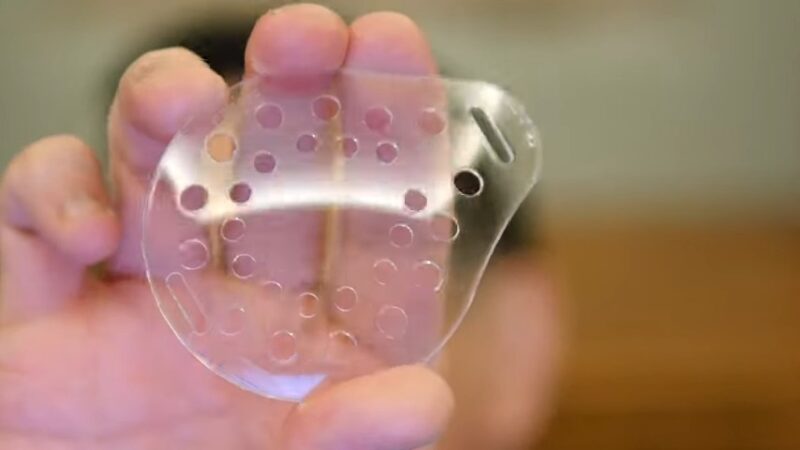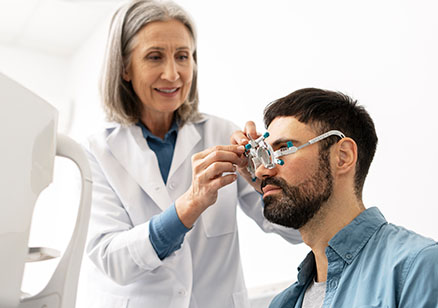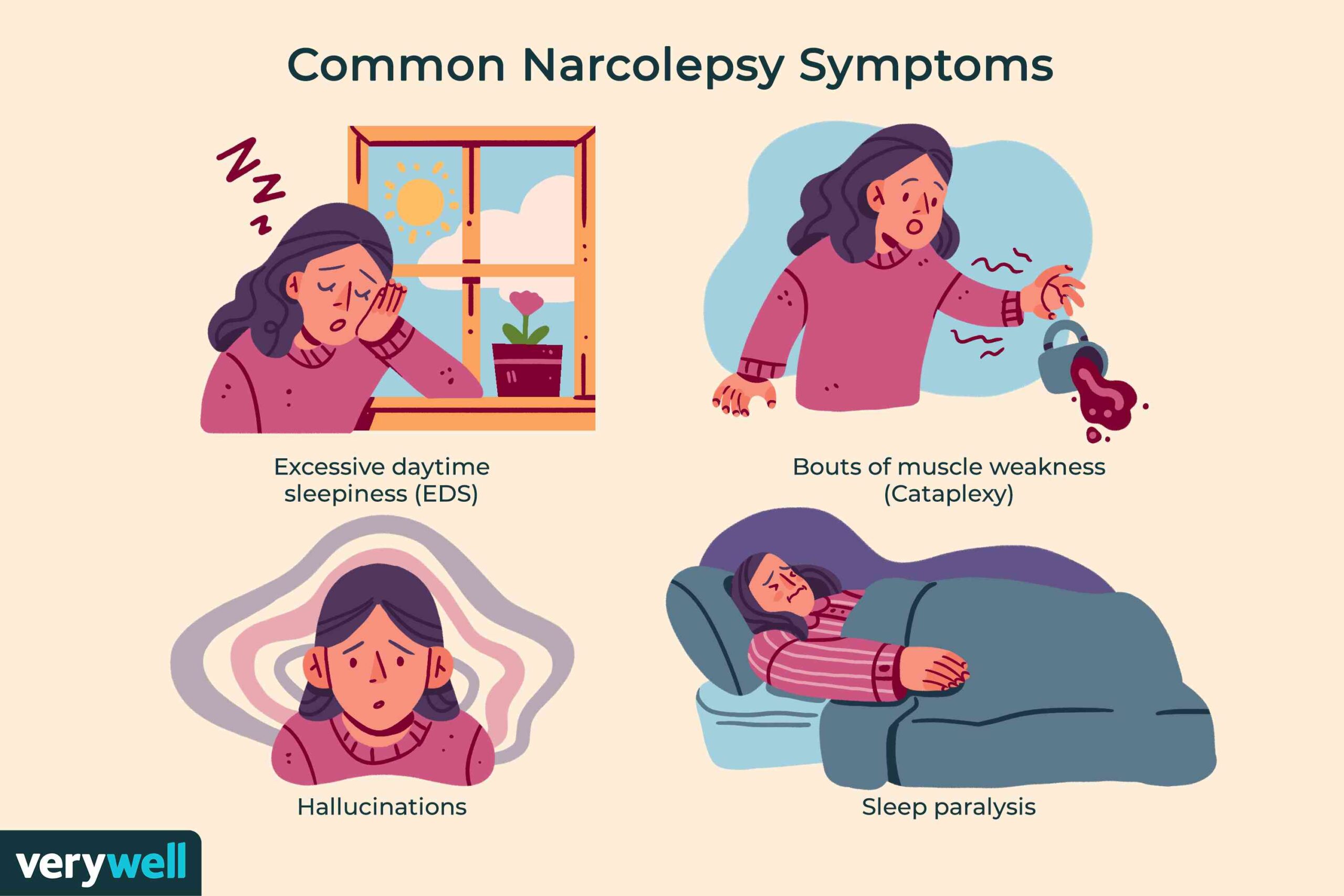How long to wear eye shield at night after cataract surgery-various-aspects-
After cataract surgery, it is typically advised to wear an eye shield at night for at least a week to safeguard the healing eye from unintentional rubbing or harm during sleep. Some people may need to wear it for a longer duration, depending on their individual healing process and the doctor’s recommendations.


Introduction
Cataract surgery is a common and successful procedure aimed at improving vision clarity. At Blue Fin Vision, a leading eye care clinic located on Harley Street in London, we recognize how vital post-operative care is for a quick and secure recovery. One important element of your recovery after cataract surgery is the use of an eye shield during the night.
In this article, we will explain the reasons an eye shield is needed, the duration it should be worn, and additional important advice for the best recovery experience following cataract surgery.
Elaboration:
Initial Protection:
The first 24 hours following surgery are crucial, and many eye specialists suggest wearing the shield continuously throughout this time, taking it off only to apply prescribed eye drops.
First Week:
For the subsequent 6-7 nights, it is essential to wear the shield while sleeping to ensure the surgical site heals correctly and to avoid infection or inadvertent trauma.
Extended Use:
Some individuals may need to keep wearing the shield for more than a week if they rest on their stomach or side, as this can put pressure on the eye, or if their doctor recommends it due to delayed healing.
Individualized Approach:
The length of time for eye shield use can differ based on personal healing progress, with certain patients requiring it for two weeks or longer if recovery is prolonged.
High-Risk Patients:
Those susceptible to rubbing their eyes or having underlying medical issues that may impact healing might need to use the eye shield for an extended period.

Why is an Eye Shield Essential After Cataract Surgery?
Protection from Rubbing and Pressure
While sleeping, it is easy to accidentally rub your eyes or exert pressure if you turn over. An eye shield provides a physical barrier, ensuring that the delicate structures of the eye remain safeguarded during the crucial healing phase.
Preventing Infection
An eye shield serves as a barrier against dust and possible contaminants that could lead to infection. Keeping the new surgical site clear of irritants is vital to promote proper healing.
Light Protection
In contrast to eye patches, eye shields possess small perforations that allow some light to enter while still offering protection. This design effectively balances protection and comfort, ensuring your healing eye is shielded from bright lights that may induce discomfort.
If any patient of ENT requires any surgery, opd consultation or online consultation in clinic of ENT specialist Doctor Dr Sagar Rajkuwar ,he may contact him at the following address-
Prabha ENT clinic, plot no 345,Saigram colony, opposite Indoline furniture Ambad link road, Ambad ,1 km from Pathardi phata Nashik ,422010, Maharashtra, India-Dr Sagar Rajkuwar (MS-ENT), Cell no- 7387590194 , 9892596635
Issued in public interest by –
Duration for Wearing an Eye Shield
Initial Week
The majority of eye care specialists, including those at our Harley Street clinic, advise wearing an eye shield for approximately one week following cataract surgery. This timeframe is critical as the eye starts to heal and stabilize.
Nighttime and Naps
Whenever you sleep, whether it is during your eight hours of nighttime rest or a short afternoon nap, wearing the eye shield is necessary. This practice guarantees consistent protection during your vulnerable periods.
Individual Recommendations
Each patient’s healing timeline may differ. At Blue Fin Vision, we provide personalized post-operative care instructions. Some individuals might require prolonged use of the eye shield depending on their specific healing process and physician’s recommendations.

Practical Tips for Using an Eye Shield
Apply Correctly: Make sure the eye shield is positioned comfortably and securely without exerting pressure on the eye.
Clean Regularly: Maintain the eye shield’s cleanliness by washing it each day with gentle soap and water.
Follow Up: Participate in all follow-up visits at Blue Fin Vision to observe the healing progress. Early identification of any problems can avert complications.
Avoid Rubbing Eyes: Even during daylight when the shield is removed, be cautious to steer clear of rubbing or placing pressure on your eyes.
Common Questions
Can I Remove the Eye Shield During the Day?
Certainly, the eye shield is mainly required when sleeping. While awake, it is advisable to steer clear of intense activities and places that may bring dirt or irritants close to the eye.
Can I Use an Eye Patch Instead?
Although eye patches prevent light from entering, they do not safeguard against physical impacts and dust to the same extent as an eye shield. It’s important to utilize the eye shield suggested by your eye care provider to ensure maximum safety.
What If I Find It Uncomfortable?
While it may feel somewhat uneasy, the hassle is a minor cost to ensure proper healing. If the discomfort continues, reach out to your eye care professional at Blue Fin Vision to discuss potential modifications or other options.
Conclusion
In summary, utilizing an eye shield at night following cataract surgery is an uncomplicated yet efficient action to safeguard your eyes, encourage appropriate healing, and avert complications. At Blue Fin Vision, your vision and health are our main concerns. Following the post-operative guidelines given by your eye care professional will ensure that you achieve the optimal outcome from your cataract surgery.
For any additional questions or to arrange a consultation, do not hesitate to contact Blue Fin Vision, your reliable eye clinic located on Nashik, Maharashtra.
By concentrating on your post-operative care and following the recommended guidelines, you can anticipate a successful recovery and take advantage of the complete benefits of your cataract surgery.
Do not hesitate to get in touch with us at Blue Fin Vision for further information on cataract surgery and post-operative care. We are here to support you at every stage of your journey to clearer vision.
FOR INFORMATION IN GREAT DETAIL ON Cataract meaning PL CLICK ON THE LINK GIVEN BELOW-It Is Always Better To View Links From Laptop/Desktop Rather Than Mobile Phone As They May Not Be Seen From Mobile Phone. ,In Case Of Technical Difficulties You Need To Copy Paste This Link In Google Search. In Case If You Are Viewing This Blog From Mobile Phone You Need To Click On The Three Dots On The Right Upper Corner Of Your Mobile Screen And ENABLE DESKTOP VERSION.
FOR INFORMATION IN GREAT DETAIL ON Cataract Surgery PL CLICK ON THE LINK GIVEN BELOW-It Is Always Better To View Links From Laptop/Desktop Rather Than Mobile Phone As They May Not Be Seen From Mobile Phone. ,In Case Of Technical Difficulties You Need To Copy Paste This Link In Google Search. In Case If You Are Viewing This Blog From Mobile Phone You Need To Click On The Three Dots On The Right Upper Corner Of Your Mobile Screen And ENABLE DESKTOP VERSION.
FOR INFORMATION IN GREAT DETAIL ON What are the 3 types of cataract surgery PL CLICK ON THE LINK GIVEN BELOW-It Is Always Better To View Links From Laptop/Desktop Rather Than Mobile Phone As They May Not Be Seen From Mobile Phone. ,In Case Of Technical Difficulties You Need To Copy Paste This Link In Google Search. In Case If You Are Viewing This Blog From Mobile Phone You Need To Click On The Three Dots On The Right Upper Corner Of Your Mobile Screen And ENABLE DESKTOP VERSION.
FOR INFORMATION IN GREAT DETAIL ON Difference between glaucoma and cataract PL CLICK ON THE LINK GIVEN BELOW-It Is Always Better To View Links From Laptop/Desktop Rather Than Mobile Phone As They May Not Be Seen From Mobile Phone. ,In Case Of Technical Difficulties You Need To Copy Paste This Link In Google Search. In Case If You Are Viewing This Blog From Mobile Phone You Need To Click On The Three Dots On The Right Upper Corner Of Your Mobile Screen And ENABLE DESKTOP VERSION.
FOR INFORMATION IN GREAT DETAIL ON Cataract Symptoms PL CLICK ON THE LINK GIVEN BELOW-It Is Always Better To View Links From Laptop/Desktop Rather Than Mobile Phone As They May Not Be Seen From Mobile Phone. ,In Case Of Technical Difficulties You Need To Copy Paste This Link In Google Search. In Case If You Are Viewing This Blog From Mobile Phone You Need To Click On The Three Dots On The Right Upper Corner Of Your Mobile Screen And ENABLE DESKTOP VERSION.
FOR INFORMATION IN GREAT DETAIL ON Cortical cataract PL CLICK ON THE LINK GIVEN BELOW-It Is Always Better To View Links From Laptop/Desktop Rather Than Mobile Phone As They May Not Be Seen From Mobile Phone. ,In Case Of Technical Difficulties You Need To Copy Paste This Link In Google Search. In Case If You Are Viewing This Blog From Mobile Phone You Need To Click On The Three Dots On The Right Upper Corner Of Your Mobile Screen And ENABLE DESKTOP VERSION.
Why it’s done
To treat cataracts, cataract surgery is performed. Blurry vision and greater light glare are symptoms of cataracts. Your health care team may recommend cataract surgery if the condition interferes with your normal daily routines.
In certain cases, cataract surgery may be advised if the condition prevents the treatment of a different eye issue. For instance, if a cataract hinders your eye doctor from seeing the back of your eye to monitor or treat other eye conditions like age-related macular degeneration or diabetic retinopathy, they may advise cataract surgery.
Waiting to get cataract surgery often won’t hurt your eye, giving you time to think about your choices. You may not need cataract surgery for several years, if ever, if your sight is still rather good.
Keep these questions in mind when thinking about cataract surgery:
- Are you able to drive and carry out your duties in a safe manner?
- Do you have any trouble reading or viewing television?
- Are gardening, shopping, cooking, taking medication, or ascending stairs challenging?
- Does having issues with your eyesight impair your ability to live independently?
- Is it harder to see in bright light?
Risks
Most post-cataract surgery complications can be managed effectively, but they are rare.
The hazards associated with cataract surgery include:
- Edema.
- Infection.
- Bleeding.
- Low eyelid.
- Movement of an artificial lens from its position.
- Retinal detachment is the term for when the retina shifts position.
- Glaucoma.
- A secondary cataract.
- Vision loss.
If you have any additional eye illnesses or significant medical conditions, your chances of problems are greater. Due to underlying eye damage from other diseases, cataract surgery may occasionally fail to restore eyesight. These could be glaucoma or macular degeneration. Before deciding to undergo cataract surgery, it’s best to assess and address any additional eye issues if at all possible.
Medicines and food
You could be ordered to fast for 12 hours before undergoing cataract surgery. Your eye doctor may also recommend that you temporarily discontinue any medications that might raise your risk of bleeding during the treatment. Since certain prostate treatments might conflict with cataract surgery, it is important to tell your doctor if you use any of them.
You might be given antibiotic eye drops to use one or two days prior to the procedure.
Other precautions
In most cases, you may return home the day of your procedure. But since you won’t be able to drive, make arrangements for a ride back. Since your eye physician may restrict certain activities, like bending and lifting, for around a week following your surgery, you should also make arrangements for help at home if needed.
Prior to the procedure
About a week before your procedure, your eye doctor uses a painless ultrasound test to determine the size and shape of your eye. This helps decide what kind of intraocular lens implant, sometimes referred to as an IOL, is needed.
IOLs will be implanted in almost all patients undergoing cataract surgery. By concentrating light onto the back of your eye, these lenses enhance your eyesight. The lens will be imperceptible to the sight and touch. It becomes a permanent component of your eye and needs no maintenance.
There are several different kinds of IOLs. You and your eye doctor will talk about the best kind of IOL for you and your lifestyle before the procedure. Cost may be a consideration as well, since insurance carriers may not cover all lens types.
Plastic, acrylic, and silicone are the materials used to manufacture IOLs. Some IOLs shield against ultraviolet radiation. Others are made of hard plastic and are implanted through an incision that needs several stitches to heal.
The majority of IOLs, though, are flexible. As a result, the incision is smaller and needs very little to no sutures. The surgeon folds this kind of lens and implants it into the empty capsule where the original lens used to be. The folded IOL unfolds upon entering the eye, filling the empty capsule.
The different kinds of lenses available are as follows:
- Monofocal with a fixed focus. The only thing this kind of lens does is help you see in the distance. In general, reading requires the use of reading glasses.
- Monofocal with a focus on accommodation. The ability of this lens to react to eye muscle movements allows it to aid in close-range or distant vision.
- Multifocal. This kind of lens includes various regions that assist with seeing objects at close, medium, and distance. These lenses are similar to bifocal or progressive glasses.
- Toric is another name for astigmatism correction. A toric lens can aid in correcting your eyesight if you have a severe astigmatism.
To decide what kind of IOL is best for you, speak with your eye surgeon about the advantages and disadvantages of each kind.
Typically performed as an outpatient procedure, cataract surgery lasts no more than an hour.
Your pupil is dilated by the eye drops that are first placed in your eye. You will be given drugs to numb the area. A sedative, a medication that can help you relax, may also be prescribed. You could still be awake but groggy throughout surgery if you’re given a sedative.
The clouded lens is typically removed during cataract surgery, and a clear synthetic lens is implanted. But in some instances, a cataract can be surgically removed without inserting an artificial lens.
Surgical methods used to extract cataracts include:
- Phacoemulsification is the process of employing an ultrasound probe to break up the lens in preparation for extraction. Your surgeon creates a small incision in the cornea, the front of your eye, during phacoemulsification (fak-o-e-mul-sih-fih-KAY-shun). After that, a very small probe is inserted into the lens at the site of the cataract.
The probe, which emits ultrasound waves, is used by your surgeon to break up the cataract and remove the pieces via suction. The artificial lens is placed into the lens capsule, which is located at the very back of your lens. After the surgery, the small incision in your cornea might be closed with stitches.
- Extracapsular cataract extraction is the process of cutting the eye and removing the lens in one piece. The use of extracapsular cataract extraction has decreased. Because it necessitates a greater incision than that used in phacoemulsification, this is the case. Your surgeon uses instruments via this bigger incision to remove the hazy lens and the front capsule of the lens. To give the artificial lens a place to rest, the very back capsule of your lens is left in place.
If you have some eye conditions, you may be able to have this treatment. The bigger incision necessitates stitches.
The artificial lens is inserted into the vacant lens capsule after the cataract has been surgically removed using either phacoemulsification or extracapsular extraction.
Following the operation
Your eyesight should begin to improve within a few days after cataract surgery. As your eye heals and adjusts, your vision might be hazy at first.
Prior to surgery, cataracts often have a brown or yellow tint. As a result, colors seem boring. Colors may appear brighter after your surgery since you are seeing through a new, clear lens.
The week after your surgery, you will typically see your eye doctor one or two days later, and then once again after about a month to check your recovery.
For a few days following surgery, it is common to experience itching and minor pain. Do not rub or push on your eye.
The day of surgery and for a few days afterward, your eye doctor may advise you to use an eye patch or protective shield. During the healing phase, your doctor may advise you to use the protective shield while you sleep.
To help reduce edema, regulate eye pressure, and avoid infection, you may be given eye drops or other medications. In some instances, these drugs can be administered by injection into the eye during surgery.
The majority of the pain should be gone in a few days. A full recovery frequently occurs in eight weeks.
If you have any of the following, call your doctor right away:
- Vision loss.
- Pain that doesn’t go away even with the use of over-the-counter pain relievers.
- Redness in the eyes has increased.
- Inflated eyelids.
- Multiple new patches, known as floaters, in front of your eye or light flashes.
After cataract surgery, the majority of individuals require glasses at least occasionally. When your eyes have recovered enough, your doctor will let you know that you may get a final prescription for glasses. Typically, this occurs one to three months following the operation.
The second procedure is typically planned by your doctor after the first eye has recovered from cataract surgery in both eyes.
If Any Patient of ENT Requires Any Surgery, Opd Consultation Or Online Consultation In Clinic of ENT Specialist Doctor Dr. Sagar Rajkuwar ,He May Contact Him At The Following Address-
Prabha ENT Clinic, Plot no 345,Saigram Colony, Opposite Indoline Furniture Ambad Link Road ,Ambad ,1 km From Pathardi Phata Nashik ,422010 ,Maharashtra, India-Dr. Sagar Rajkuwar (MS-ENT), Cell No- 7387590194, 9892596635
Issued In Public Interest By –
www.entspecialistinnashik.com
If you are from Nashik Maharashtra and having any eye/ophthalmic problem then you may take appointment with -Birla eye hospital, B-180, Opposite Zilla Parishad,, Trimbak Road, near Pooja Internatinal Hotel, Nashik, Maharashtra 422002,
Phone no -02532505666
If you are not from Nashik but from India then you may dial -8888888888-this is no of Just dial and they may provide you the contact number and adress off eye specialist doctor near your locality .In any case it is always better to take opinion from your regular doctor whom you trust,/respect so that he can let you know details of senior and experienced eye specialist doctor/ophthalmologist
Any ophthalmologist with minimum of 10 yrs experience is considered senior



